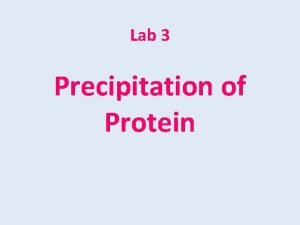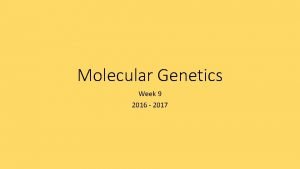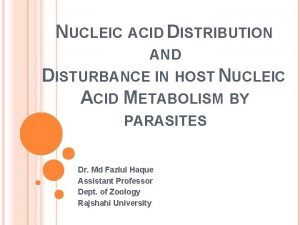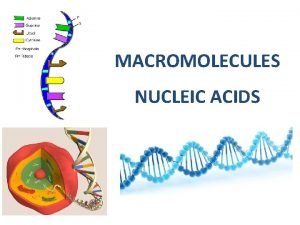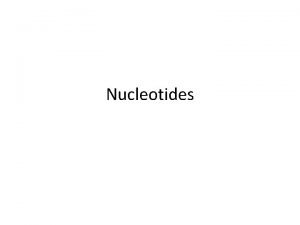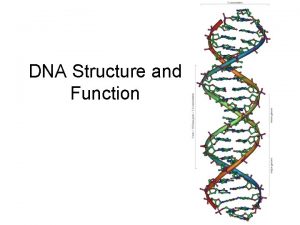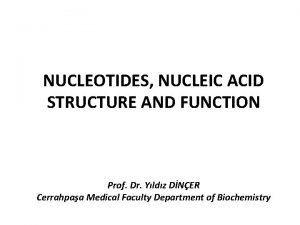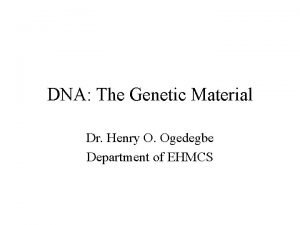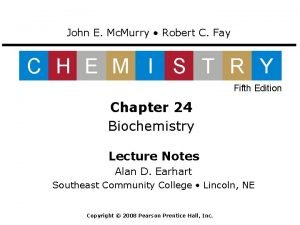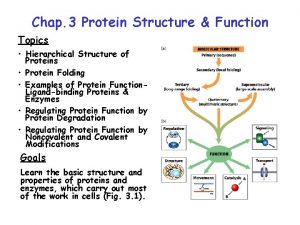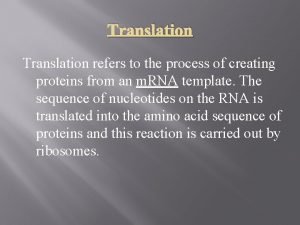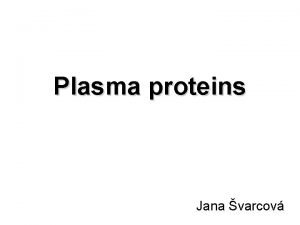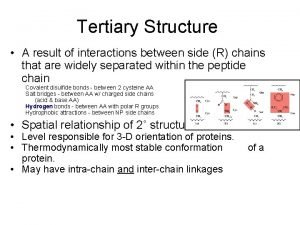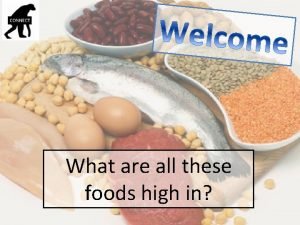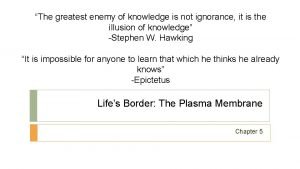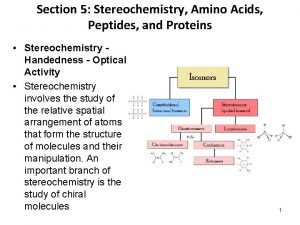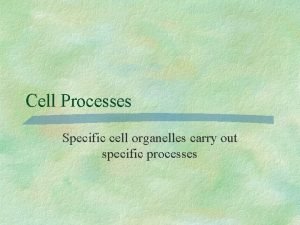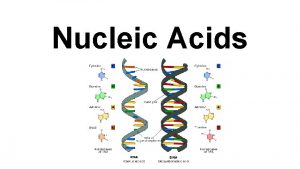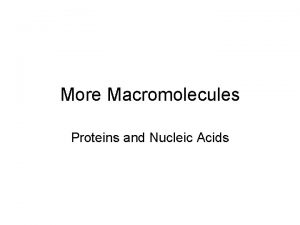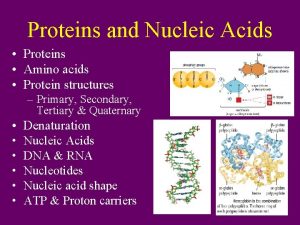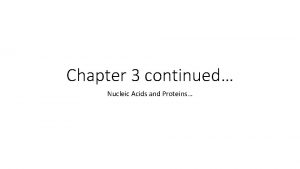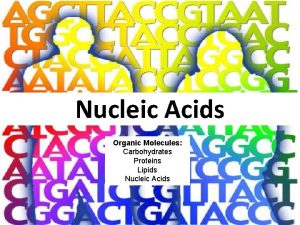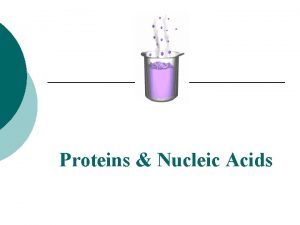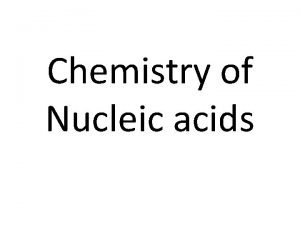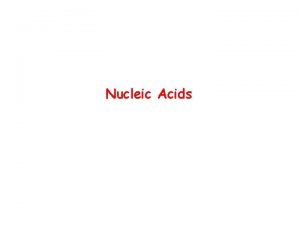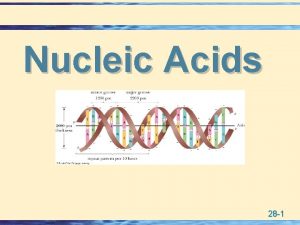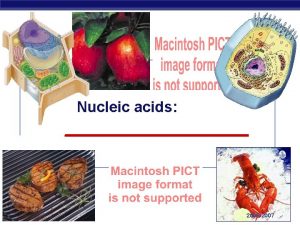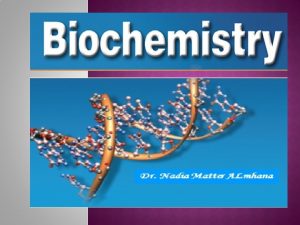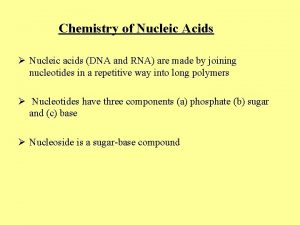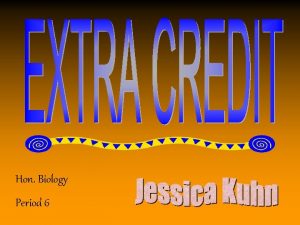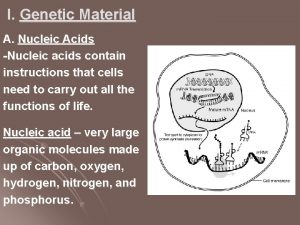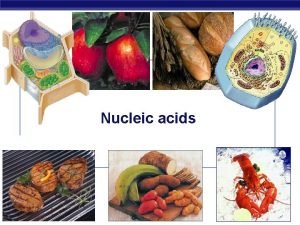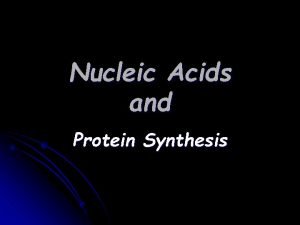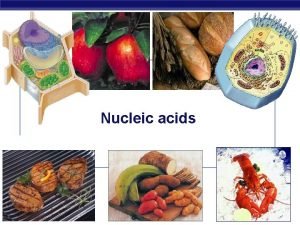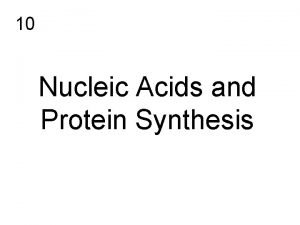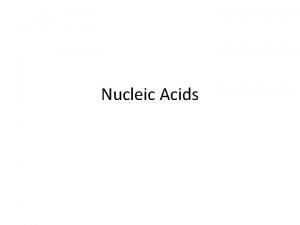Nucleic Acids Proteins Units 5 6 Nucleic Acids

























- Slides: 25

Nucleic Acids & Proteins Units 5 & 6

Nucleic Acids a) Phosphate Group c) 5 Carbon Sugar b) Nitrogen Base Nucleic Acids are Polymers made of Nucleotides 3 Parts: a)Phosphate group b)5 -Carbon Sugar c)Nitrogen base 2 Types: DNA & RNA

THYMINE URACIL

Nitrogen Bases Pyrimidines Single ring Double ring Pyrimidines = C, T, & U Purines = A & G Pyrimidines ALWAYS bond to Purines G bonds to C A bonds to T or U Purines

RNA Sugar = Ribose RNA is Single Stranded RNA has Uracil Sugar & phosphate backbone Nitrogen Bases

DNA Sugar = Deoxyribose DNA is Double Stranded Hydrogen Bonds DNA has Thymine Sugar & phosphate backbone Nitrogen Bases

DNA A bonds to T; G bonds to C Hydrogen bonds hold Nitrogen bases together to form the Double helix

DNA is found in the Nucleus of eukaryotic cells in the form of Chromosomes

Sections of DNA that code for a protein are called Genes Chromosomes are made of DNA wound around proteins called Histones Homologous chromosomes have the same Genes (possibly different alleles)

DNA Replication Original strands are used as a Pattern/Template to build new Complimentary DNA strands Enzymes help with this process: Helicase breaks the hydrogen bonds between the complimentary strands DNA Polymerases build the new strands and then proofread the nucleotide sequence

Semi-conservative DNA Replication 2 Identical DNA molecules are produced. Each molecule is made of one ORIGINAL strand one NEW strand.

ENZYMES of DNA Replication ADDS NEW NUCLEOTIDES UNZIPS STRANDS

Leading strand (3’ end) Lagging strand (5’ end)

DNA polymerase can only move towards the 5’ end of the original DNA molecule (New DNA is built 5’ to 3’) This means the Lagging strand is built in small sections called Okazaki fragments.

Central Dogma DNA RNA Protein

Protein Synthesis Transcription Translation

5 4 Hydrogen Carboxyl Group 6 Amino Group Proteins are Polymers made of Amino Acids 4 Parts: Central Carbon Amino group Hydrogen Carboxyl group Central Carbon 3 & R group 7 R Group Protein Functions: Transport of substances, Enzymes that control the rate of reactions, provide Support, build Tissues, & fight Infections

3 Types of RNA • m. RNA = Copy of gene/DNA (instructions for making the protein) • t. RNA = Translates/Decodes m. RNA and Transfers/Delivers amino acids to the ribosome in the correct sequence • r. RNA = Ribosomes are made of r. RNA which Bond amino acids together to build the Polypeptide (protein) a) Messenger RNA b) Ribosomal RNA c) Transfer RNA

Transcription the process of Copying DNA into the complimentary sequence of m. RNA The enzyme that copies the DNA (gene) into m. RNA is RNA polymerase No T in RNA so A bonds to U

RNA Polymerase Works just like DNA polymerase EXCEPT it adds RNA nucleotides

Transcription occurs in the Nucleus

Begins when the m. RNA leaves the nucleus and goes to the Ribosome t. RNA decodes the m. RNA 3 bases at a time Codon = 3 base sequence on m. RNA Codons are complimentary to the Anticodons on the t. RNA r. RNA forms Peptide bonds between Amino Acids to form the Polypeptide (protein) Translation

Translation Amino Acid Anticodon Codon

Transcribe the following DNA into m. RNA DNA: TAC – CCG – GAT – TAG – ATC CUA - AUC GGC - ____ m. RNA: AUG ____ - UAG ___ Translate the above m. RNA into the correct sequence of Amino Acids using the Codon Chart STOP Ile - ____ Met - ____ Protein: ____ - ____ Gly - Leu

DNA = Template 1 Codons on m. RNA 3 m. RNA built by RNA polymerase 2 m. RNA goes to ribosome 4 Amino acid bonded to Polypeptide 7 t. RNA carries amino acids 5 t. RNA goes to pick up another Amino Acid 8 t. RNA Anticodon decodes m. RNA codons 6
 Precipitation of proteins by strong mineral acids
Precipitation of proteins by strong mineral acids Amino acids are joined together in proteins by
Amino acids are joined together in proteins by Stores hereditary information
Stores hereditary information What is an anticodon
What is an anticodon Dna rna
Dna rna Function of nucleic acids
Function of nucleic acids Building block of nucleic acid
Building block of nucleic acid Atp ester bond
Atp ester bond Building blocks of nucleic acids
Building blocks of nucleic acids Macromolecules
Macromolecules Nucleic acid structure
Nucleic acid structure Nucleotides
Nucleotides Hydoxyle
Hydoxyle Function of nucleic acids
Function of nucleic acids Nucleic acids
Nucleic acids Purpose of nucleic acid
Purpose of nucleic acid Botox dosage forehead
Botox dosage forehead When units manufactured exceed units sold:
When units manufactured exceed units sold: Protein structure
Protein structure Translation refers to the
Translation refers to the Types of globulin
Types of globulin Globular vs fibrous proteins
Globular vs fibrous proteins What is the difference between hbv and lbv
What is the difference between hbv and lbv Peripheral proteins
Peripheral proteins Peptide stereochemistry
Peptide stereochemistry Integral and peripheral proteins
Integral and peripheral proteins
